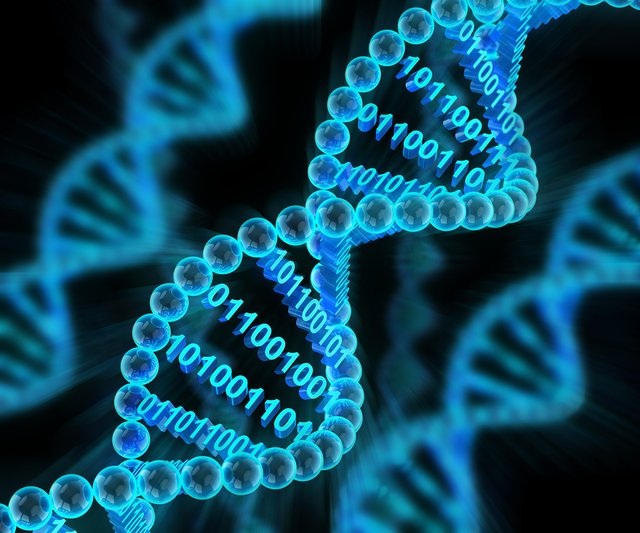AI and Blockchains; DNA and CyberLife

Image Source: https://physicsworld.com/a/data-storage-in-dna-gains-from-a-larger-alphabet/
While humans understand a bit about DNA and what is written on it, much of what is encoded on DNA, and the mechanics of DNA itself are still misunderstood. In biological life forms, DNA encodes the information necessary to create life. It is stored in a secured fashion, accessible by the functional groups that work with it and, when replicated; it forks and mutates and recombines with differently encoded DNA to create new organisms. It builds massive structures that become the foundation for biological bodies, and these bodies then give rise to unique expressions of consciousness.
DNA and blockchains have similarities. Take, for example, that DNA acts as an information storage device whereby biological information is timestamped, can be sliced, diced, and recombined in new ways to complete a task by the enzymes and other groups that are interested in it. Look at asexual reproduction; when an organism makes a copy of itself through mitosis, as well as cloning. This is similar to new blockchain nodes that come online running an exact copy of a ledger protocol. Mutations enter the picture when a project decides to fork a blockchain and run mostly the same copy of the original protocol, yet over time it forks again and the code changes until such a point that it is different enough that it can be considered independent of its original chain. Descent with modification.
Nucleotides of DNA as the building blocks for life are visualized in much the same way as blockchain data packets, with one key difference; blockchains are not double stranded. A single strand of DNA strand is, symbolically, a biological blockchain, and blockchains are symbolically digital single strands of DNA. Additionally, a phylogenetic tree in its own complex way looks very similar to the patterning of a group of blockchain forking. When viewed in this way, blockchain network growth can be inspired by and follow similar patterns as biological life, and DNA researchers can ask new questions. Where, for example, are the hash pointer equivalents in single strands of DNA? What would a double stranded blockchain look like? What would cyberspace equivalent of enzymes look like, and what about the structures that DNA gives rise to?
Questions for further thought and to outsource to the community; How do blockchains factor into the growth of cybernetic organisms and AI's? Likewise, how can blockchain companies and biotech companies collaborate to unlock the information encrypted in DNA and thus build more meaningful crypto projects?
Congratulations @blockchainbae! You have completed the following achievement on the Steem blockchain and have been rewarded with new badge(s) :
You can view your badges on your Steem Board and compare to others on the Steem Ranking
If you no longer want to receive notifications, reply to this comment with the word
STOPVote for @Steemitboard as a witness to get one more award and increased upvotes!
Very Interesting!